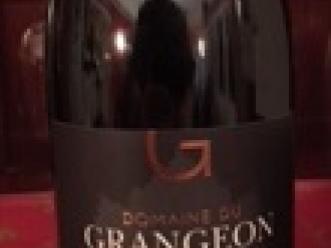I’m walking through a valley filled with wild herbs—rosemary, thyme, lavender and artemisia. Off in the distance, I can see a hill-side vineyard bursting with grapes and an ancient stone house. Next to the house, I notice people congregated near an old barn. I walk closer. When I arrive, a glass of wine is placed in my hand. I inhale and the aroma of the valley fills my senses. Then, I smile and take a sip. Deep, dark fruit quickly coats my palate. I look to the madame pouring the wine. “Welcome to the Languedoc,” she says. “We've been waiting for you.”
This was a dream I had after drinking a bottle of Hegarty Chamans Cuvee Number Three, a Syrah-Carignan blend from Languedoc-Roussillon’s Minervois region. It made me wonder about my professional wine knowledge. I’d taught a handful of French wine classes, sold plenty of Banyuls and Rosé but had never tasted wine of this quality. All for only $15. I couldn’t figure out how they managed to bottle garrigue (or the wild herbs) and terrior of Minervois for such a low price.
I thought I knew the Languedoc-Rousillon, a place where oceanic clouds fill the sky and wild, rolling hills cover valleys full of dense aromatic scrub. It was the area where Van Gogh, Matisse and Cezanne came to paint masterpieces; a magical place so rich in wine history that nearly every civilization has written about it. I had read about the Languedoc-Roussillon’s geographic complexities, weathered vignerons, and relentless, sun-drenched terriors. But my knowledge was only a small part of this incredible region.
Stretching from the Rhone to Spain, the Languedoc-Roussillon is the world’s largest vineyard. The production, consisting mostly of indigineous grapes, surpasses that of Bordeaux and Australia. Until recently, man’s intervention—mass production, imported grapes, and politics—created a type of bulk wine that almost wiped out the vineyards. Somehow the region survived. Now, the Languedoc-Roussillon is one of the hottest up-and-coming regions in the world, respected for both quality and value.
How does an area go from making barely consumable bulk wine to artisan wine central? It’s a combination of honoring tradition and embracing the future. The Languedoc-Roussillon is one of the oldest wine making regions in the world; the local grapes go back thousands of years, and many are grown on old-vines tended to by veteran vignerons or growers. Unlike other French wine regions, which long ago matched grape varieties with terriors, the Languedoc-Roussillon vignerons, with the help of the French authorites, continue to search for grape-terrior relationships.
Two of my favorite Languedoc-Roussillon grapes are piquepoul and mauzac. The piquepoul is the lone grape of the increasingly popular Picpoul de Pinet region, which makes dry, fruity wines from the sandy soil near the Meditterean shoreline. These shellfish wines (think oysters and mussels) have a touch of Italian style, which makes sense since the Romans cultivated the grape 2000 years ago. Their strong acidity and intense citrus flavors are comparable to Loire Valley whites at half the price.
The mauzac grape of Limoux has been used to produce sparkling wines since 1531. In fact, Dom Perignon came to the ancient abbey at Saint-Hilaire in the 1600s to learn about sparkling wines. He likely took notes of the mauzac growing in the chalky, pebble-patched soil and the natural secondary fermintation that was producing carbonation. It would be impossible to say whether sparkling wines were invented here, but one thing is for sure: if you want a light, dry and inexpensive sparkling wine, a Limoux is something you should check out.
The Languedoc-Roussillon produces expressive wines with a magical background. Besides the indigenous grapes, Catalan and Rhone style wines flourish here as well. Many are already available in the United States and the new wines will surely follow. Until, then, treasure the wines you find and dream of the wines to come.






